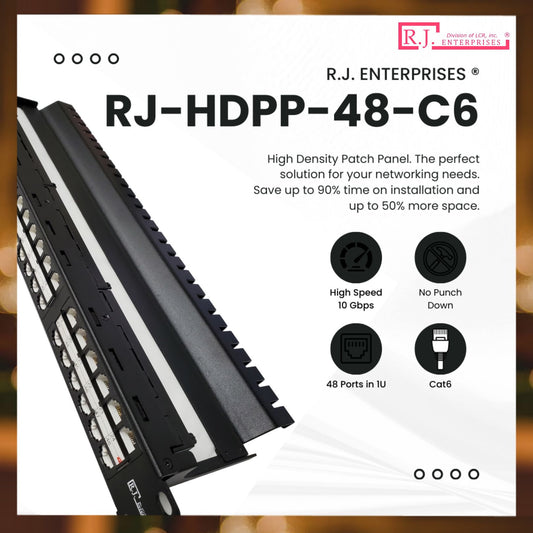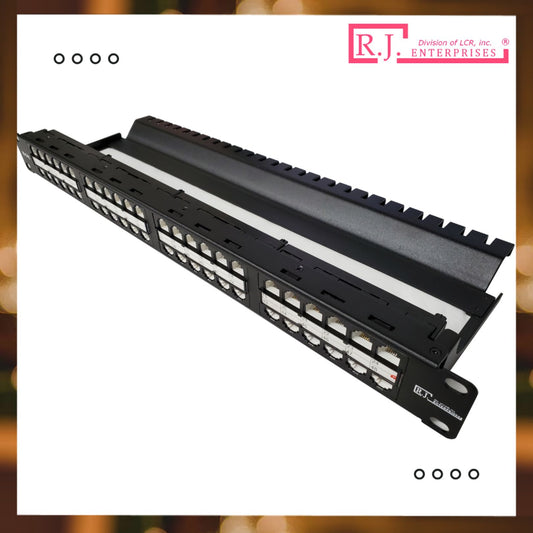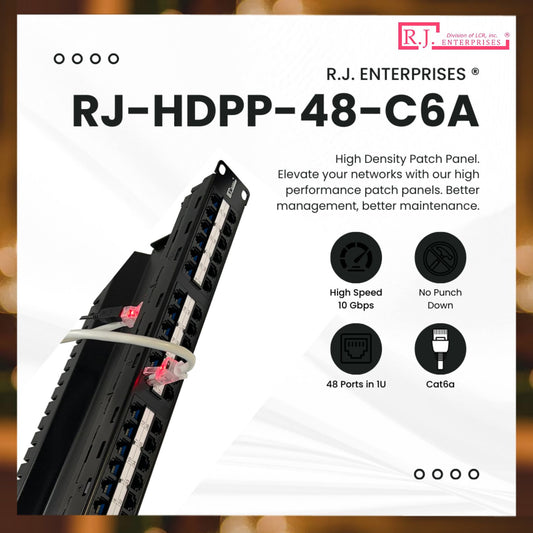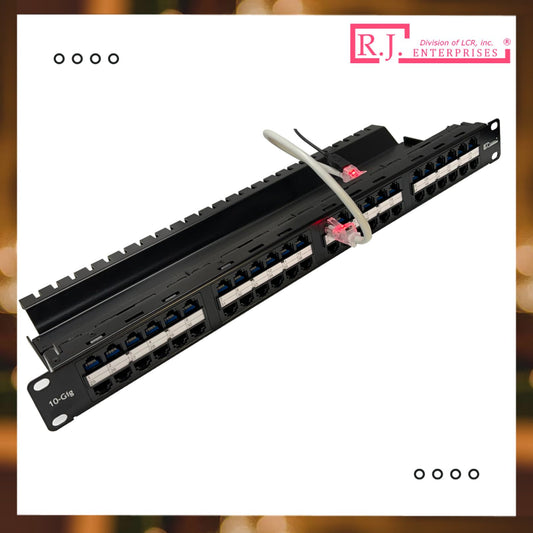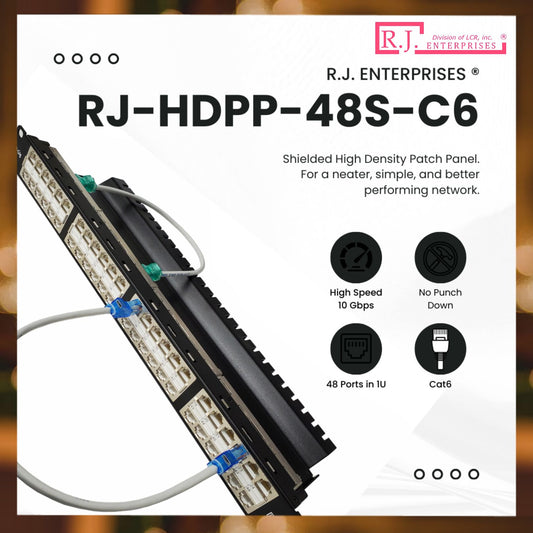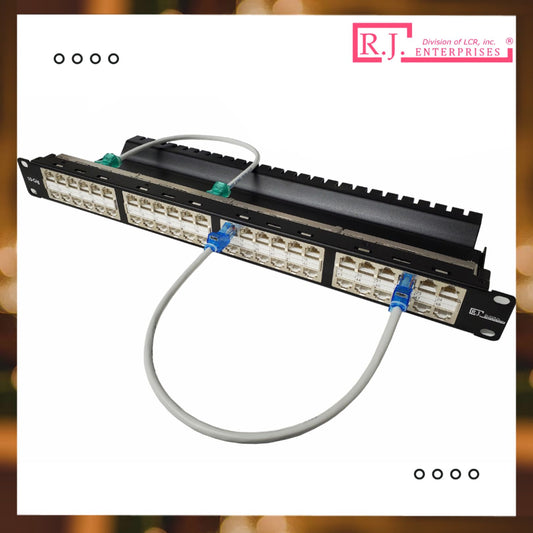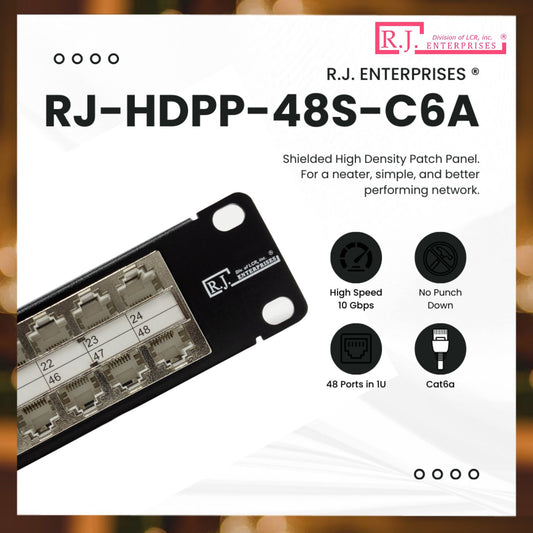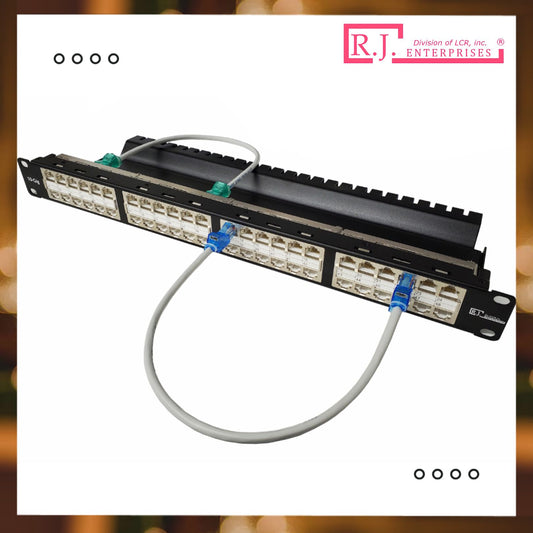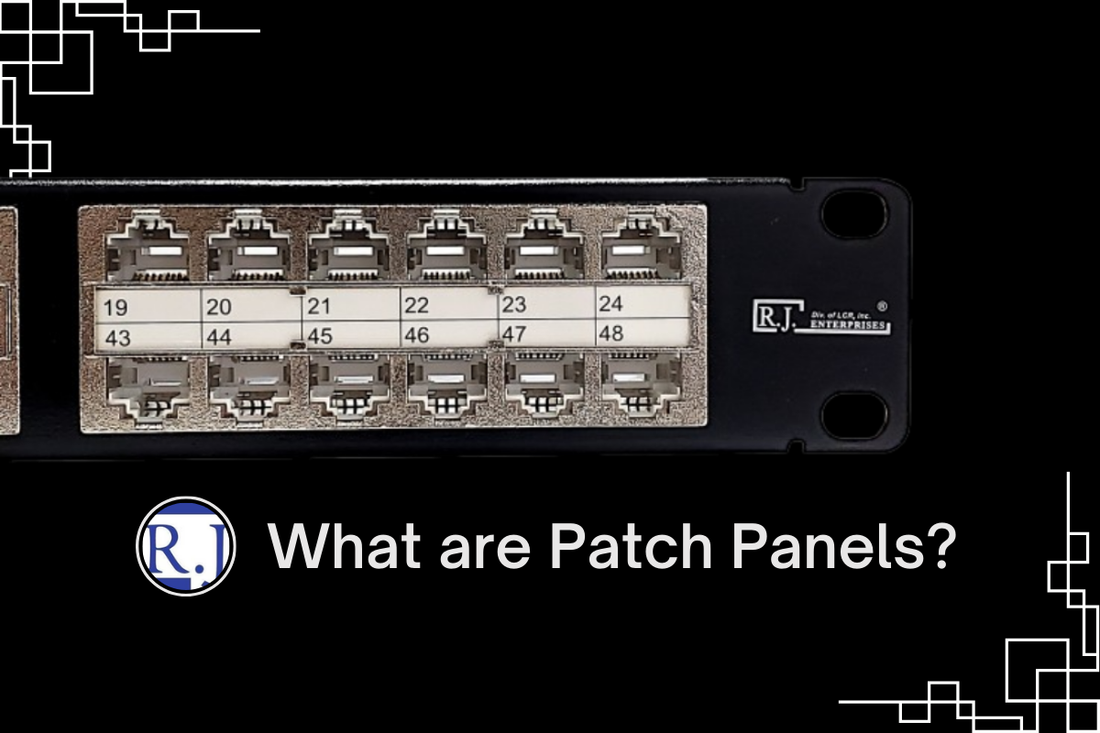
What are Patch Panels?
Share
Key Takeaways
- Patch panels are designed to help organize cables into a structured system.
- Patch panels allow for seamless rerouting, testing, and general maintenance of your systems.
- They are inexpensive/cost-effective solutions for maintenance and rerouting due to the increased uptime and superior cable management.
- Understanding the variations in patch panels will allow you to choose the most suitable option for your network’s cable management.
What are Patch Panels?
Patch panels are mounted connector devices designed to organize and connect network cables within a structured cabling system. They act as a node for easier cable management and maintenance. Patch panels are typically rectangular, with rows of ports for cable connections. The front of a panel may contain labels, allowing users to easily track and identify the cables attached to the port. The back of a patch panel contains a connector, like a punch-down block or a keystone-based connector, that allows cables and wires to be terminated.
Why should you choose to use Patch Panels?
Patch panels offer an overall enhancement to the quality and management of your networking systems. Choosing to utilize these panels within your system can:
- Allow for easier cable management and organization. Patch panels allow users to reduce clutter, easily identify connection points, and develop a systematic method to manage their cables. In an enterprise environment, having patch panels will enable personnel to quickly reroute cables in an efficient manner.
- Patch panels result in cost-effective maintenance. A central node for your network connections saves time and money when identifying or troubleshooting issues within your network.
- Room for scalability. By adding more wires to your panel, you can increase the size of your network with ease. Choosing a panel with more ports also allows for an easier expansion of your setup.
- Optimize your signal quality. A well-maintained and organized cabling setup will minimize interference with your signal transmissions.
What are the different types of Patch Panels?
Patch panels are incredibly effective tools for managing your network cables. However, patch panels can come in different types. Understanding the difference between these variations will enable you to find the most efficient and suitable solutions to your cabling needs.

Shielded and Unshielded. Just like in keystone jacks, having a shielded patch panel protects your network from EMI (Electromagnetic interference). A shielded panel is effective in environments where there may be a large quantity of high powered electrical wires/cables. Conversely, an unshielded jack serves the same purpose as the shielded jack… without the additional protection from EMI.

Cat5e/Cat6/Cat6a. Again, just like keystone jacks, patch panels can come in different forms based on the types of cables they are designed for. They are differentiated based on their compatibility and performance according to the specifications of the cables they were designed for. Cat5e is typically used in smaller networks such as homes, while Cat6 and Cat6a are used for networks that require higher performances and speeds up to 10 Gbps such as data centers or large offices.
Punch-down vs. Feed-through vs. High-Density. Patch panels can come in different forms and can be terminated using different methods, serving different purposes during installation.
- Punch-down panels (or punch blocks) contain connectors where cables are “punched down”, usually with a specialized tool, onto metal pins. This variation offers a secure and permanent connection for your network. Note that punch-down patch panels typically take up more time and effort during installation than their counterpart.
- Feed-through patch panels allow for the insertion of cables without the necessity of punching them down. Cables are directly plugged into the ports, allowing for easier connection to pre-terminated cables. These panels are ideal for configurations where flexibility, scalability, and space is key due to their simple installation.
- High-density patch panels are panels that consist of a large number of ports within a smaller space, typically 1U (or 1.75 inches), than a traditional patch panel. Whereas traditional patch panels may take up 2U, a high-density patch panel will offer the same amount of ports with half the area, effectively saving users 50% more space. These types of panels are especially suitable for high-demand setups and limited-space environments where every inch counts. High-density patch panels can come in the form as feed-through panels as well. For example, here at R.J. Enterprises, our collection offers 48-ports high-density patch panels with feed-through “plug-and-play”… combining two highly effective time and space saving options within a single panel.



